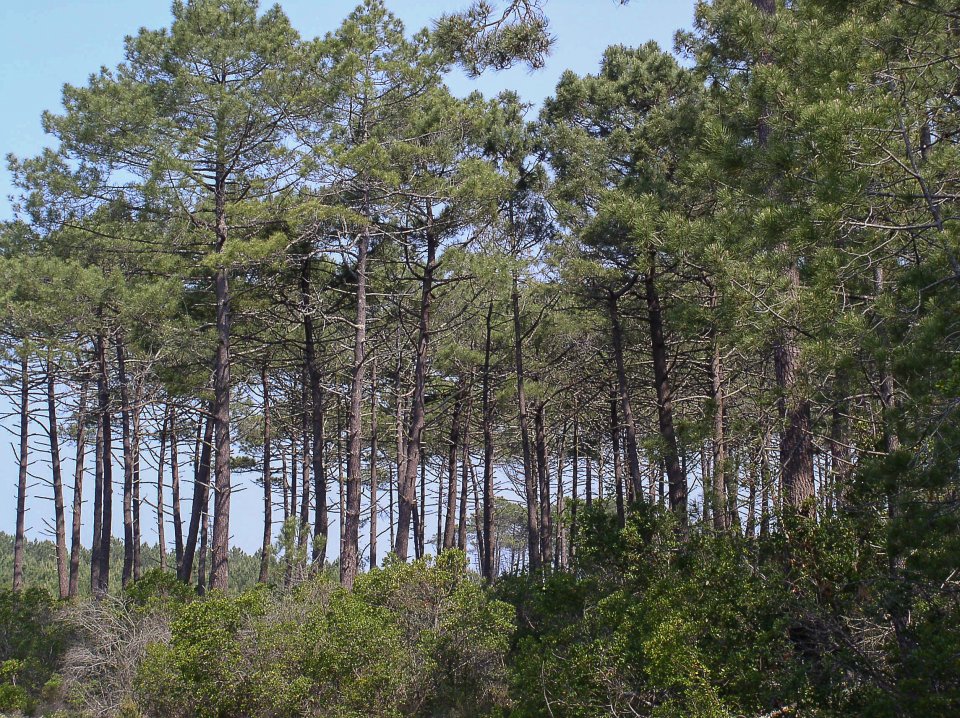
The aim of the EVAFORA study is to simulate the behaviour of Pinus pinaster stands in the face of climate change by 2100 by analysing wood volume production and carbon stock data. Climatic variables (temperature increase, precipitation decrease,...) as well as the effects of silvicultural operations are integrated thanks to the GO + model. In the long term, will maritime pine remain the species best adapted to the new climatic conditions in the Landes de Gascogne massif? What silvicultural management will ensure greater stand resilience to climate change?
Currently, with more than 800,000 hectares and 87 million standing cubic meters, Maritime Pine is the dominant species in the Landes de Gascogne forest massif. Only species of production adapted to the soil and climate conditions (sandy, acidic and mineral-poor soil), Maritime Pine represents a major economic issue in the forest-wood sector in Aquitaine thanks to its wood production and in the past thanks to its resin production. It seems essential to know the potential impact of climate change on its growth in order to help forest managers in their decision making.
In an unfavourable climatic scenario with a temperature increase of 4 to 5°C by 2100 (RCP 8.5 by IPCC), Maritime Pine would remain a species adapted to the pedoclimatic conditions of the Landes de Gascogne. However, the risk of tree dieback of abiotic origin will increase. In the near future, volume production of wood could even increase. Moreover, dynamic management of stands (timber removal through thinning and clear cutting) would improve their resilience to climate change.
Stands that stock a lot of carbon in biomass will be the most exposed to climate change due to a high leaf index (foliage density), increasing the impacts of drought and warming. Standard silvicultural management of maritime pine (4 thinnings and one clear-cut at 120 cm circumference) would show the least sensitivity to climate variations and would be the most water efficient and productive in terms of volume of hardwood.
The GO+ model can perform simulations only for regular monospecific stands. The model is well suited for the Landes de Gascogne massif, which is dominated by maritime pine plantations but cannot currently be used for species such as sessile oak and pedunculate oak, which are nevertheless among the main French species.
The GO+ model will be adapted to cover the main French production species. The work described above is being extended in the "Forests-21" project, the aim of which is to build a Web portal to support decision-making. The results of simulations of different management modes in the context of climate change will be made available. The target audience for this portal is decision-makers and foresters.
Further information
Jean-Pierre Loudes © CNPF
